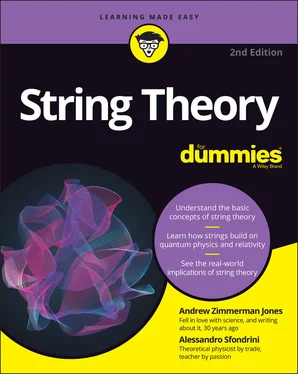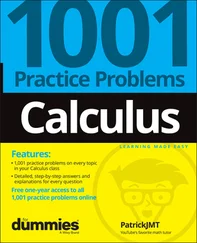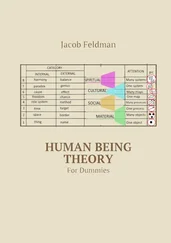Exploring the Practice of Science
Before you can figure out whether string theory is scientific, you have to ask, “What is science?”
Science is the methodical practice of trying to understand and predict the consequences of natural phenomena. This is done through two distinct but closely related means: theory and experiment.
Not all science is created equal. Some science is performed with diagrams and mathematical equations. Other science is performed with costly experimental apparatus. Still other forms of science, while also costly, involve observing distant galaxies for clues to the mystery of the universe.
String theory has spent more than 40 years focusing on the theory side of the scientific equation and, sadly, is relatively lacking on the experimental side, as critics never hesitate to point out. Ideally, the theories developed would eventually be validated by experimental evidence. (See the later sections “ The need for experimental falsifiability” and “ The foundation of theory is mathematics” for more on the necessity of experimentation.)
The myth of the scientific method
In school, many of us were taught that science follows nice, simple rules called the scientific method. These rules are a classical model of scientific investigation based on principles of reductionism and inductive logic. In other words, you take observations, break them down (the reductionism part), and use them to create generalized laws (the inductive logic part). String theory’s history certainly doesn’t follow this simple model.
The steps of the scientific method students are taught actually change a bit depending on the textbook schools use in a given year, though they generally have mostly common elements. Frequently, they are delineated as a set of bullet points:
Observe a phenomenon: Look at nature.
Formulate a hypothesis: Ask a question (or propose an answer).
Test the hypothesis: Perform an experiment.
Analyze the data: Confirm or reject the hypothesis.
In a way, this scientific method is a myth. You may earn a physics degree from a top college without once being asked a question about the scientific method in a physics course. (Though it may come up if you dabble a bit more in the philosophy of science or similar courses.)
Turns out, there’s no single scientific method that all scientists follow. Scientists don’t look at a list and think, “Well, I’ve observed my phenomenon for the day. Time to formulate my hypothesis.” Instead, science is a dynamic activity that involves a continuous, active analysis of the world. It’s an interplay between the world we observe and the world we conceptualize. Science is a translation between observations, experimental evidence, and the hypotheses and theoretical frameworks that are built to explain and expand on those observations.
Still, the basic ideas of the scientific method do tend to hold. They aren’t so much hard-and-fast rules, but they’re guiding principles that can be combined in different ways depending on what’s being studied.
One of the best situations for a scientist to be in is to observe a pattern or trend in phenomena, and then use that to make a precise prediction about some other phenomenon that hasn’t yet been observed. This provides the basis for a new experiment or observation that, if it matches the prediction, provides an excellent foundation for thinking the line of reasoning that led to the prediction was probably on the right track.
BREAKING DOWN NATURE WITH BACON AND GALILEO
The ideas of the scientific method are often traced back to Sir Francis Bacon’s 1620 book, Novum Organum, and to Galileo Galilei’s works in the 1630s. Broadly speaking, the main idea is that reductionism and inductive reasoning could be used to arrive at fundamental truths about the causes of natural events, which can then be compared with experience and experiment. This was quite a revolutionary idea because, at that time, your best bet of convincing anybody of your ideas would have been to argue that they matched Aristotle’s theories written 2,000 years earlier!
In the Baconian model, the scientist breaks natural phenomena down into component parts that are then compared to other components based on common themes. These reduced categories are then analyzed using principles of inductive reasoning. Inductive reasoning is a logical system of analysis where you start with specific true statements and work to create generalized laws that would apply to all situations by finding commonalities between the observed truths.
The need for experimental falsifiability
Traditionally, the idea has been that an experiment can either confirm or refute a theory. An experimental result yields positive evidence if it supports the theory, while a result that contradicts the hypothesis is negative evidence.
In the 20th century, a notion arose that the key to a theory — the thing that makes it scientific — is whether it can in some way be shown to be false. This principle of falsifiability can be controversial when applied to string theory, which theoretically explores energy levels that can’t at present (or possibly ever) be directly explored experimentally. Some claim that because string theory currently fails the test of falsifiability, it’s somehow not “real science.” (Check out Chapter 18for more on this idea.)
The focus on this falsifiability is traced back to philosopher Karl Popper’s 1934 book, The Logic of Scientific Discovery. He was opposed to the reductionist and inductive methods that Francis Bacon had popularized three centuries earlier. In a time that was characterized by the rise of modern physics, it appeared that the old rules no longer applied.
Popper reasoned that the principles of physics arose not merely by viewing little chunks of information, but by creating theories that were tested and repeatedly failed to be proved false. Observation alone could not have led to these insights, he claimed, if they’d never been put in positions to be proven false. In the most extreme form, this emphasis on falsifiability states that scientific theories don’t tell you anything definite about the world, but are only the best guesses about the future based on past experience.
For example, if you predict that the sun will rise every morning, you can test your prediction by looking out the window every morning for 50 days. If the sun is there every day, you have not proved that the sun will be there on the 51st day. After you actually observe it on the 51st day, you’ll know that your prediction worked out again, but you haven’t proved anything about the 52nd day, the 53rd day, and so on.
 No matter how good a scientific prediction is, if you can run a test that shows that it’s false, you have to throw out the idea (or at least modify your theory to explain the new data). This led the 19th century biologist Thomas Henry Huxley to define the great tragedy of science as “the slaying of a beautiful hypothesis by an ugly fact.”
No matter how good a scientific prediction is, if you can run a test that shows that it’s false, you have to throw out the idea (or at least modify your theory to explain the new data). This led the 19th century biologist Thomas Henry Huxley to define the great tragedy of science as “the slaying of a beautiful hypothesis by an ugly fact.”
To Popper, falsifiability was far from tragic, but was instead the brilliance of science. The defining component of a scientific theory, the thing that separates it from mere speculation, is that it makes a falsifiable claim.
Of course, it might not be easy to falsify a scientific claim. The claim may be a prediction at the forefront of current scientific knowledge, perhaps requiring additional technological progress before the experiments that would prove the claim false can be run. This is where things can get tricky for string theory, where much of the benefit is the ability to skirt along the edge of currently testable knowledge.
Читать дальше

 No matter how good a scientific prediction is, if you can run a test that shows that it’s false, you have to throw out the idea (or at least modify your theory to explain the new data). This led the 19th century biologist Thomas Henry Huxley to define the great tragedy of science as “the slaying of a beautiful hypothesis by an ugly fact.”
No matter how good a scientific prediction is, if you can run a test that shows that it’s false, you have to throw out the idea (or at least modify your theory to explain the new data). This led the 19th century biologist Thomas Henry Huxley to define the great tragedy of science as “the slaying of a beautiful hypothesis by an ugly fact.”










